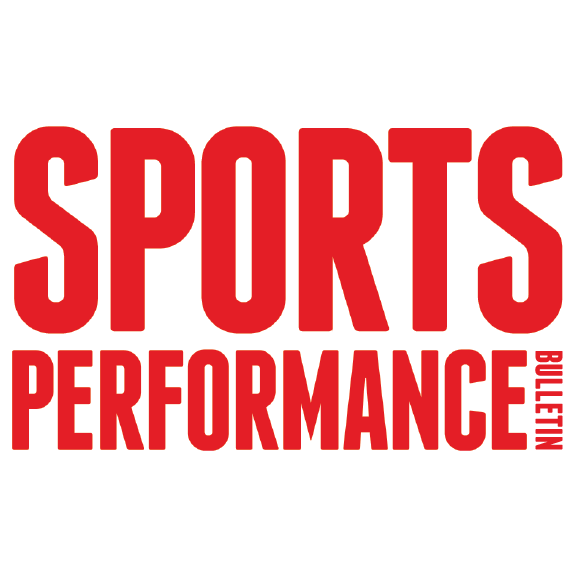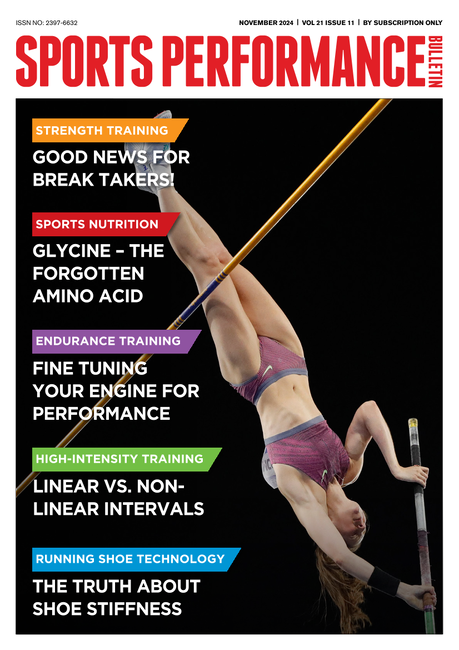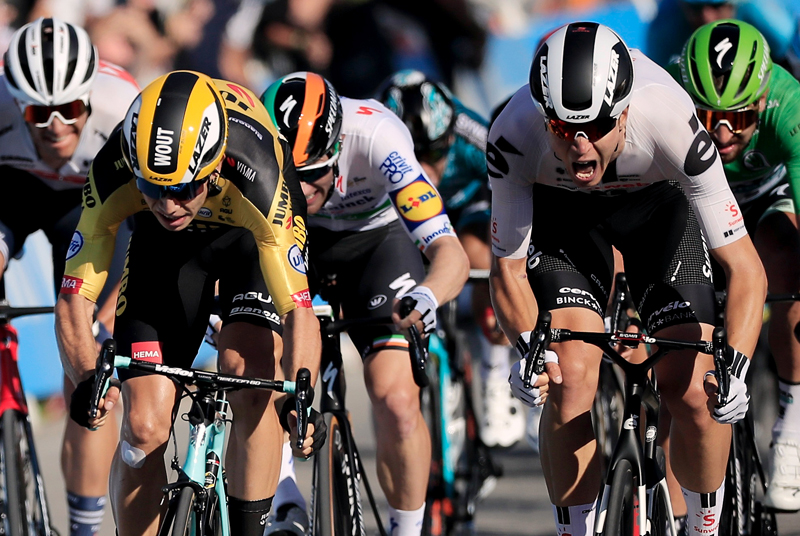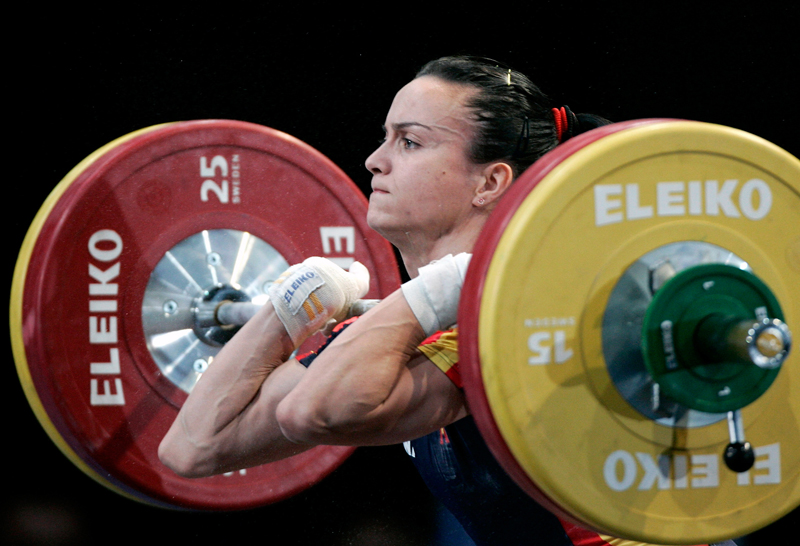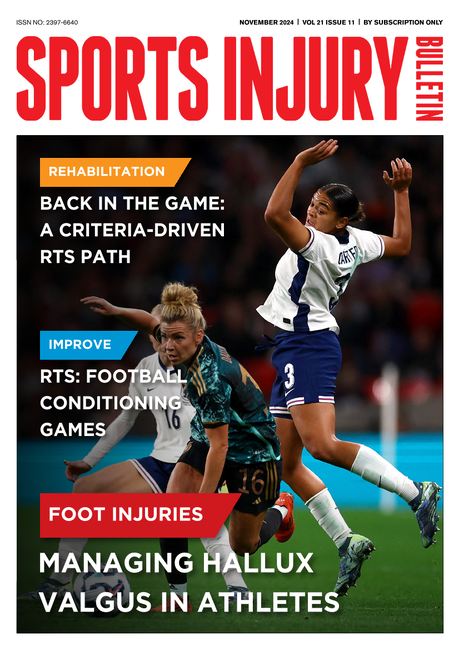This article will focus on improving your core strength by using added resistance, with pulley machines and medicine balls and dynamic throwing movements. You can see the exercises being performed, and learn important technique tips in the associated video.
The exercises
Pulley machine
1) Front sling – using pulley machine
Overview: This exercise involves a forward arm rotation, which must be controlled.Level: Intermediate.
Muscles targeted:
Core:
Abdominals and back.
Other:
Pectorals (chest) and rotator cuff (shoulder joint).
Adductors (outside of thigh muscles).
Gluteus medius (outside of butt).
Technique: Stand on one leg to the side of the high pulley machine, having selected an appropriate weight. Attach the handle above shoulder height and grasp it with the arm nearest the column (opposite side to standing leg). Brace your core and pull the weight down and around the body, keeping your elbow straight. Finish the movement with your hand next to your hip.
Maintain perfect balance and pelvic alignment throughout the movement. Complete your designated number of repetitions. Reposition yourself and repeat to other side.
Progression: Increase the weight.
Do: Ten reps on each side, increasing to 20 reps, over 2-3 sets.
2) Single-leg, single-arm rowing using pulley machine
Overview: The exercise challenges you to maintain stability while standing on one leg, controlling against a pulling force from the upper body. To achieve this, the pelvis must stay fixed when the upper back and shoulder are pulling backwards.Level: Intermediate.
Muscles targeted:
Core:
Abdominals and back.
Other:
Rear deltoid (shoulder), rhomboids (upper back), latissimus dorsi (wings of back).
Adductors.
Gluteus medius.
Technique: Stand on one leg, facing the pulley column. Attach the handle at waist height and grasp it with one hand (palm down and on the same side as the standing leg). Your arm should be extended in front of you. Keep your other arm straight by its side. Stand tall, keep your shoulders back and your back in neutral.
Brace your core and pull the handle, leading with your elbow in a rowing movement, back towards your hip. Finish with your hand by your side and elbow behind you. You must aim to maintain perfect balance and pelvic alignment as you perform the rowing movement. Reposition to repeat on opposite side.
Progression: Increase the weight.
Do: Ten reps each side, over 2-3 sets.
3) Pulley crunch
Overview: By using the pulley machine heavy resistance can be applied to develop greater core strength. You must take care to fix your hips (see description) throughout the exercise, otherwise the hip flexors (muscles at the top, front of your thighs) will contribute to the exercise, which will significantly reduce the training effect on the abdominalsLevel: Advanced.
Muscles targeted:
Abdominals.
Technique: Kneel with your back to the pulley column, holding a rope attachment in each hand around your neck. Start with your hips fully extended (i.e. kneeling and body fully upright). Your shoulders, hips and knees should all be in line. Focus on your abs and crunch down, pulling the weight. Do not use your arms.
Ensure that your pelvis remains set and stable throughout the exercise - all the movement should come from spine flexion (forward bend). As noted if you flex your hips, or lean forward you will reduce impact of the exercise on the core.
Progression: Increase the weight.
Do: Five to 10 reps, over 2-3 sets.
Medicine ball exercises
Medicine ball throws
The final progression in the core training series introduces dynamic movement with medicine ball throwing and catching. The aim of these exercises is to invoke a plyometric (stretch/reflex) muscular action in the core. This action is like stretching a spring and then releasing it. In the split second that the spring recoils immense levels of energy will be produced. A similar reaction occurs in your muscles when a pre-stretch is immediately followed by a contraction – this is the aim of these exercises.
Catch ball = stretch – immediate transition into and throw = reflex
What weight medicine ball to use
The medicine ball’s weight should allow you to perform the exercises with good technique. If the ball is too heavy you will sacrifice core stability and core muscle input into the exercises as your arms do more work.Men should start with a 5kg ball; women with a 3kg ball
4) Medicine ball sit-up and throw
Overview: This is an advanced version of the sit-up. The throwing action makes the ‘crunch’ phase faster and the catching action loads the return phase.Level: Advanced.
Muscles targeted:
Abdominals (plus upper body).
Technique: You will need a partner to receive and pass the ball. Alternatively, perform the exercise in front of a wall.
Start in a sit-up position (knees bent at 90-degrees). Hold the ball over your head with elbows bent and lower your trunk towards the floor. Contract your abdomials and move forward, quickly keeping your feet on the floor. When you are in a near upright position ‘crunch’ your abs and throw the ball (either to your partner or against a wall). Gather or catch the ball and repeat.
Do not let your back contact the floor when preparing for each subsequent throw – rather control the descent with your abs, while keeping your hands above your head.
Progression: Progress to a heavier ball once you can comfortably do 3 sets of 20 reps.
Do: Ten to 20 reps over 2-3 sets.
5) 45-degree sit, catch and pass
Overview: This is a very tough core stability exercise that requires massive trunk muscle control to hold a good spine alignment against the impact of each catch.Level: Advanced.
Muscles targeted:
Erector spinae (back muscles).
Abdominals.
Obliques (muscles to the sides of your trunk).
Technique: With ball in hands against chest, assume a sit-up position, with your knees bent to a 90-degree angle, and lean back 45 degrees. Keep your shoulders back and neck long, but relaxed. It will take a fair amount of control and strength endurance simply to hold this posture perfectly. Aim to get this right before progressing to the catch and pass.
Raise the ball in your hands in front of your face, throw a medicine ball pass to your partner at this height. Catch the ball back. Do not flex (bend forward) your lower back, or round your shoulders, then gently throw the ball back.
Progression:
1) raise your hands above your head. This will significantly increase the stability challenge required when you catch the ball.
2) Catches can be made to either side of the head and these provide even more of a challenge.
Do: Four passes, holding the position for 30 seconds. Perform 2-3 sets.
6) Sit and twist pass
Overview: This is a trunk rotation exercise that involves catching and passing the medicine ball. This provides a challenge to the oblique muscles to produce a powerful rotation. Pelvic stability is also required so that the sitting position is held throughout the movement.Level: Advanced.
Muscles targeted:
Abdominals.
Obliques.
Technique: Sit up with your knees bent 90-degrees and lean back to 45-degrees. Hold a ‘long’ neutral spine position. Your feet, knees and hips should remain reasonably still throughout this exercise. Hold your hands to one side ready to catch the ball. Catch it and absorb the impact by turning your shoulders with the throw.
Reverse the rotation, turning back to the centre and throw the ball gently back to your partner, crunching your abs as you do so. Initiate the rotation from your waist – not your hips. Turn to the other side and repeat.
Do: Five passes from left to the right and vice-versa, over 2-4 sets.
